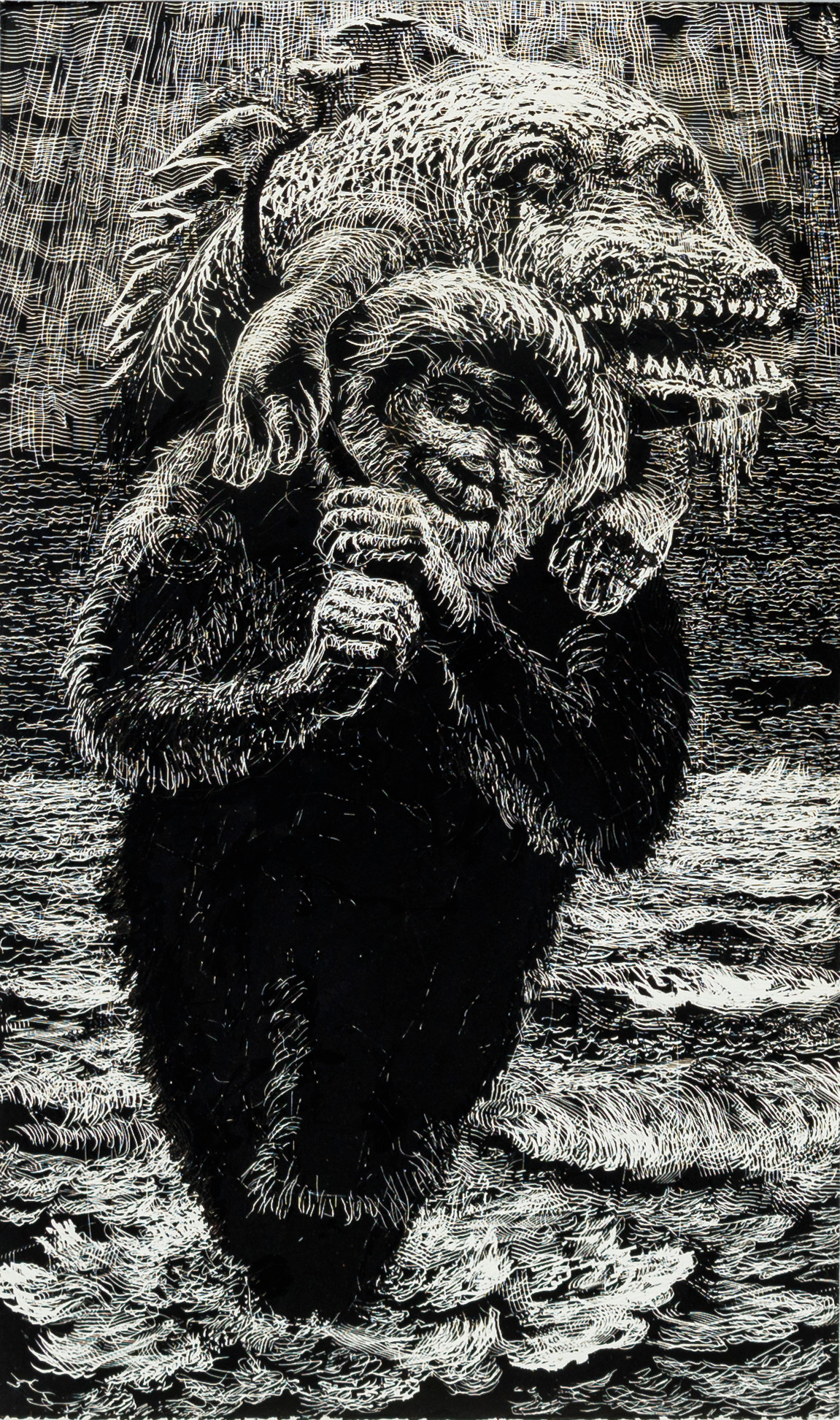Valentinas Klimasauskas, Curator of ‘Ocean Eyes’

About ‘Ocean Eyes’ by curator Valentinas Klimašauskas
The forthcoming installment of the Coast Contemporary festival, titled
‘Ocean Eyes’, is poised to deliver an open thought-provoking program that celebrates various aspects of (im)possible collaborations and encounters with
the unknown, be it the future, unthinkable, untold stories or the ocean, for example. Through a range of presentations, performances, readings, lectures, hiking, screenings, and other activities or events, the festival will provide a platform for invited artists, critics, curators, cultural producers and the public to encounter potential new friendships and numerous presents.
‘Ocean Eyes’ edition of the Coast Contemporary festival took place on the shores of Kabelvåg and Svolvær on Lofuotta/Láfot/Lofoten Islands and is meant to function as a meeting point for cultural producers and public to share their work and practices about (im)possible imaginary, poetical, sociopolitical, technological, feminist, queer, indigenous and other realities.
Artists participating in ‘Ocean Eyes’
Yaa Addae (GH/UK), Kjetil Berge (NO), Pia Eikaas (NO), Elisabeth Færøy (NO), Kåre Aleksander Grundvåg (NO), Morten Norbye Halvorsen (NO), Signe Johannessen (NO), Kaare Espolin Johnson (1907-1994 NO), Sarah Kazmi (PK), Lars Laumann (NO), Bjørn Mortensen (NO), Sandra Vaka (NO), Sille Storihle (NO), Istvan Virag (HU), Lin Wang (CH), Elin Már Øyen Vister (Sápmi/NO).
Curatorial Statement
The title ‘Ocean Eyes’ refers to the sentient ocean on the planet Solaris described in the novel by Stanisław Lem of the same title and a popular song by Billie Eilish, among other things. The ocean, which is one of the examples of the unknown, is a dominant force in the Lofuotta/Láfot/Lofoten Islands. At the current time of multiple ecological and sociopolitical crises, it inspires thinking about (im)possible (in)human collaborations with it. To this day, more than 80 per cent of the ocean has never been mapped, explored, or even seen by humans. Our projections and relationships with it, on the one hand, were and still are based on extractive economy, intensive aquaculture (think of domestication of the salmon, for example), or on fictional and speculative imagery, on the other hand.

Another inspiration is an image of “Sea Troll” (1967) by artist Kaare Espolin Johnson (1907-1994). Somewhat rough and open-to-various interpretations, the image depicts the possibility of the relationship between what may be called (more than) human (fisherman), imaginary (a chthonic sea troll) and nature (fish/ocean/wildness/unknown). At a certain point in his life, the artist had a vision of minus 22 which deeply affected his vision but also his technique and style. In the biographical documentary about the artist’s life in the Espolin gallery, Johnson talks about the necessity of having a chthonic soul companion and the picture of the sea troll suggests a possible realization of this need.
The concept of the chthonic, or the underworld, is closely linked to the ocean in this part of the world. In many mythological traditions, the sea is seen as a gateway to other worlds, both above and below. As such, the festival will feature discussions and presentations that explore the connections between the ocean, the imaginary and the supernatural. Accordingly, the festival organizers have set their sights on embracing the physical, sociopolitical, fictional, and other expressions associated with the vast expanse of the ocean. The endeavour acknowledges the vital role the ocean plays, not only in the historical and everyday experiences of the enchanting Lofuotta/Láfot/Lofoten Islands but also on a global scale, impacting our entire planet.
There is a strong chance that “Sea Troll” by Kaare Espolin Johnson refers to non-extractive and non-reductionist relationships and collaboration between (more than) humans and the so-called nature. Thus, there is a possibility that contemporary art and culture, in general, may provide us with examples and ideas that more equal collaborations are imaginable and thus possible.
About Valentinas Klimašauskas
Together with João Laia he curates the next Lithuanian pavilion at the Venice Biennial 2024 (artists: Pakui Hardware and Marija Teresė Rožanskaitė). Also, they co-curated “The Endless Frontier”, the 14th Baltic Triennial at CAC Vilnius (2021). With Inga Lāce, they curated “Saules Suns”, a solo exhibition by Daiga Grantina for the Latvian Pavilion at the Venice Biennale (2019), worked as a Program Director at Kim? Contemporary Art Centre, Riga (2017/18), and was a curator at CAC, Vilnius (2003-13). Currently, he is the curator at large at Springs.video, a moving image streaming platform that also serves as an educational and curatorial archive.
Other recently curated projects include “Fluid bodies” at Nemuno 7, Zapyškis; “An Incomplete & Unreliable Guide to Social Media War Room” at Georg Kargl Gallery, Vienna (2021); “The sex lives of fruit flies” at Low gallery, Riga (2021); “Who Looks out of a Window”, a solo by Valentýna Janů, lítost, Prague; “Pulse” by Alexandra Pirici, enlivenment of the Kaunas Ninth Fort Monument; “Microorganisms & Their Hosts”, a collaborative solo by Mindaugas Gapševičius at Atletika, Vilnius; “Máscaras Masks” at Galeria Municipal do Porto (with João Laia); “The Cave & the Garden” at Futura CCA, Prague (2020); “Columnists” at Editorial, Vilnius (2019); “Somewhere in between. Contemporary art scenes” in Europe at BOZAR, Brussels (2018); “Portals or location scouting in Kaunas”, presented by Spike Art Quarterly (2017); “A hat trick or a theory of the plankton”, Podium, Oslo and Sodų 4, Vilnius (2016); “a cab”, Kunsthalle Athena, Athens, and Podium, Oslo (2015).
Klimašauskas is the author of “Oh, My Darling & Other Rants” (The Baltic Notebooks of Anthony Blunt, 2018), “Polygon” (Six Chairs Books, 2018), and “B” (Torpedo Press, 2014).
More info at: www.selectedletters.lt